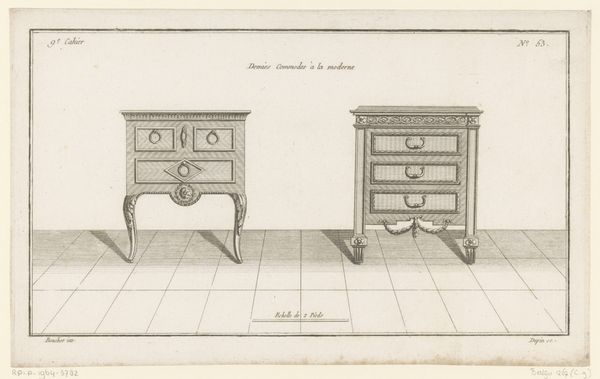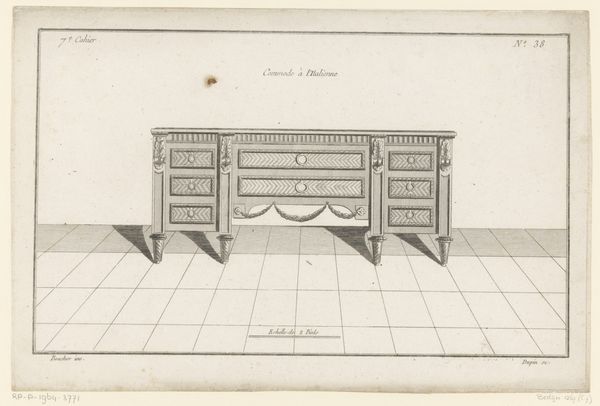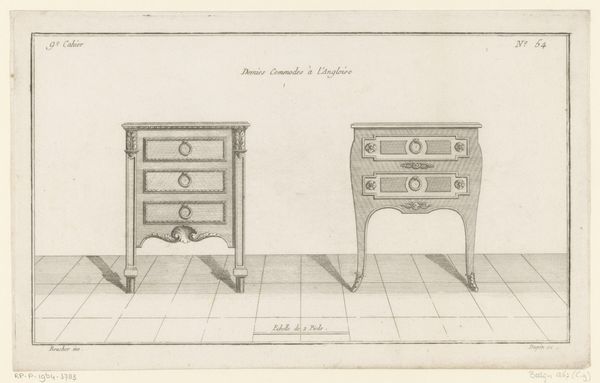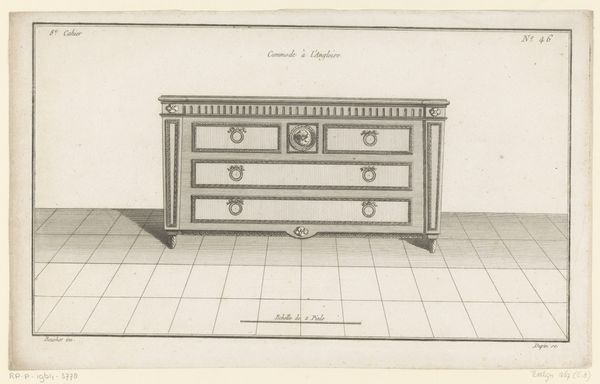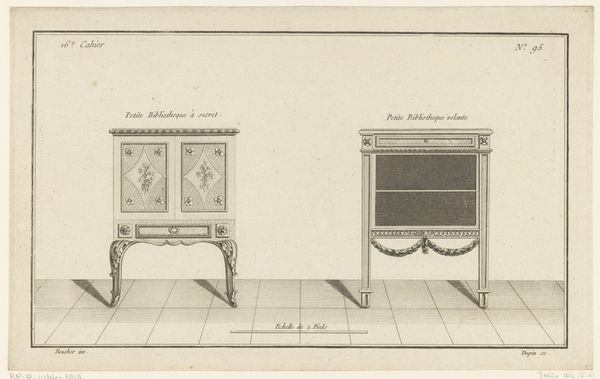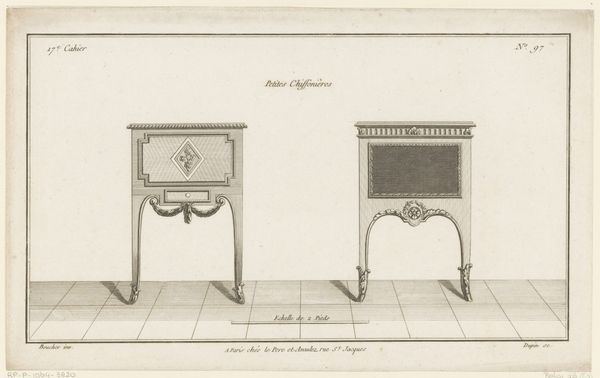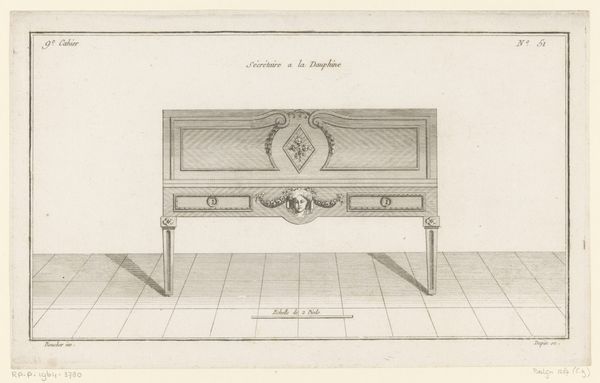
drawing, paper
#
drawing
#
paper
#
form
#
classicism
#
line
#
history-painting
Dimensions: height 202 mm, width 329 mm
Copyright: Rijks Museum: Open Domain
Curator: Look at this drawing, "Twee Commodes," or "Two Chests of Drawers," by Nicolas Dupin, created sometime between 1772 and 1779. It’s currently held here at the Rijksmuseum. What catches your eye initially? Editor: There's an odd simplicity about them, a quiet, almost understated elegance despite the ornate detailing. It feels like a blueprint for a life of ordered luxury, rendered in shades of gray. Curator: Precisely! It’s an architectural drawing intended as a guide, not a finished piece itself. These drawings represent the transition into Neoclassicism with those straight lines combined with swirling vegetal ornaments. It tells us much about the rise of a design culture catering to affluent tastes. Editor: I notice a duality in the imagery. One commode exhibits an almost severe, rectangular presence. Meanwhile, its counterpart enjoys curvier lines. Perhaps reflecting the different roles each held in the lives of their owners. Curator: An intriguing thought. We can interpret these differing designs through the lens of classical forms versus Rococo excess, revealing not only preferences but societal values influencing aesthetics during that period. These forms influenced interior design deeply. Editor: Do you see evidence of social change here? Or is it a representation of old systems trying on the latest trend? Curator: That tension is vital here. There is definitely a hint of revolutionary taste in the design. Note that these drawings weren’t necessarily about immediate consumption but instead communicated social ideals, aspirations, and who held influence in a society on the verge of upheaval. Editor: So this wasn't just about furniture, it was about the conversation happening around wealth and taste? Curator: Precisely. Looking closer, even the shadows seem to be hinting at the changing status, a future just outside the solid lines on the page, a world where things may not always be as planned or expected. Editor: I never considered that furniture drawings might reflect deeper socio-political changes so powerfully. It goes to show that context transforms our understanding entirely. Curator: Indeed. Appreciating artwork is really about unlocking dialogues and understanding social changes communicated in art and design from centuries ago.
Comments
No comments
Be the first to comment and join the conversation on the ultimate creative platform.
